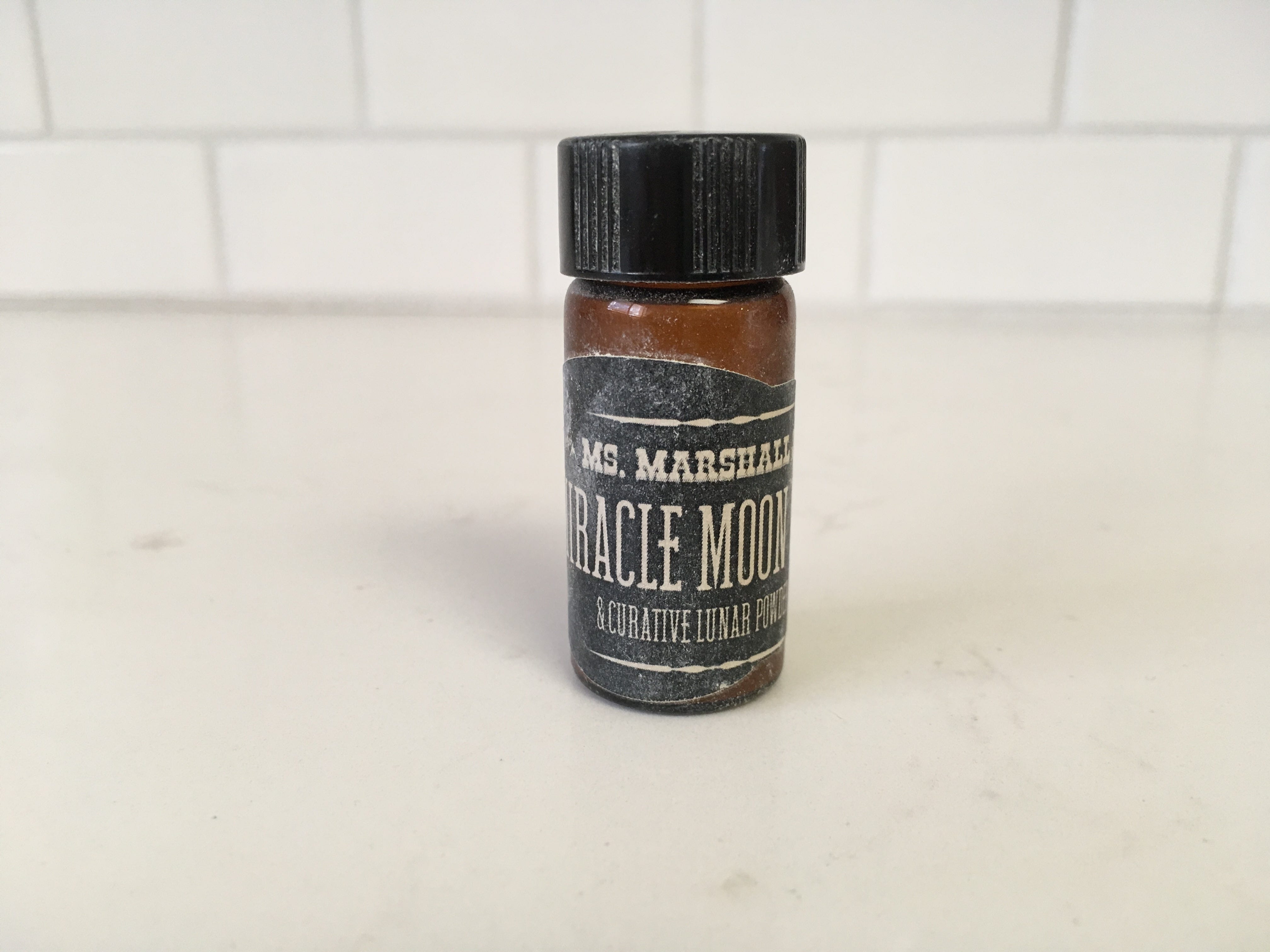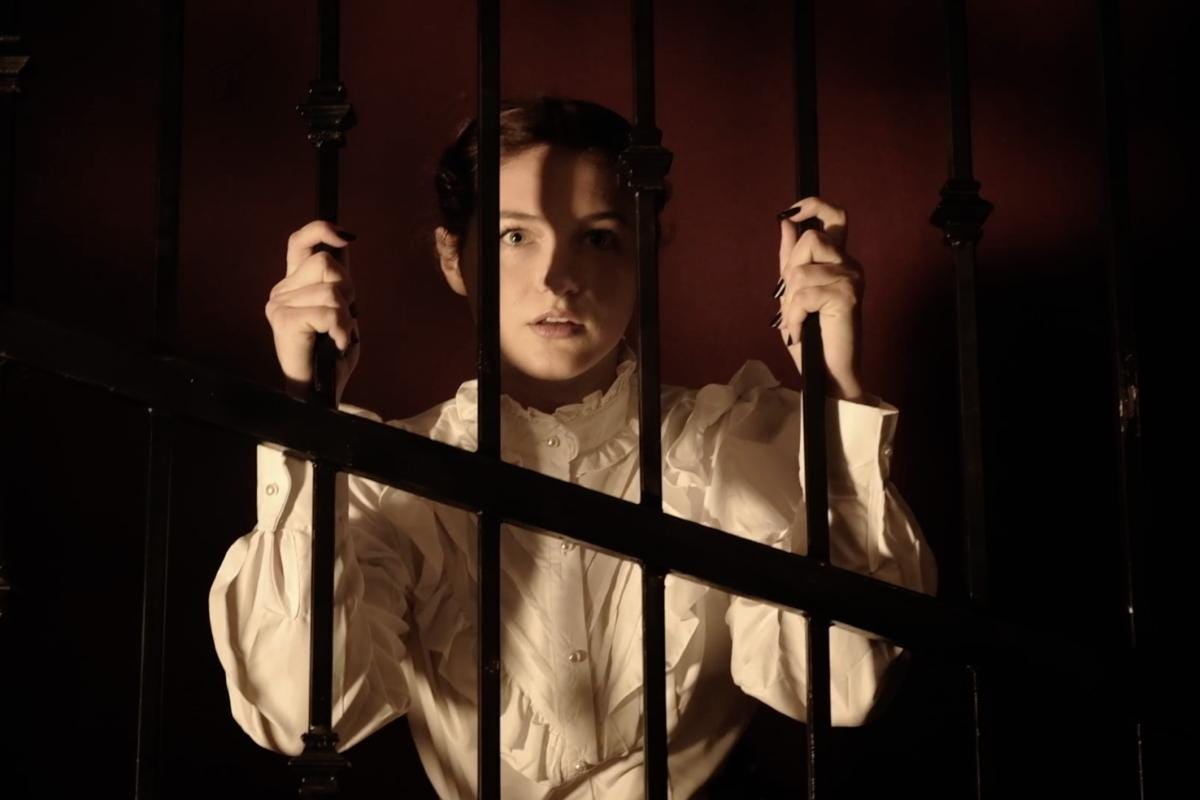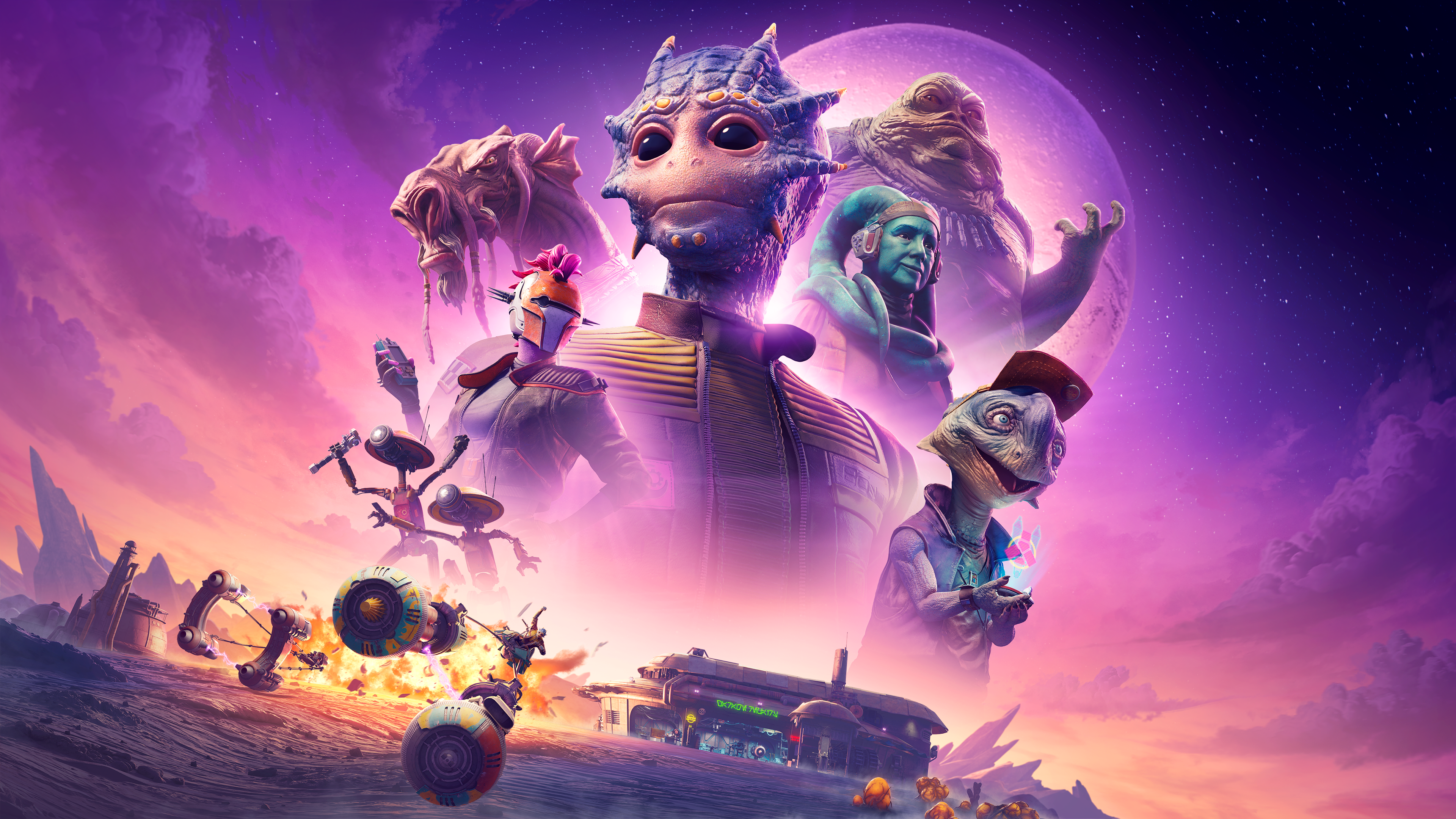
I’m at 7 o’clock and J: The Gayborhood suburbs. It’s Friday afternoon, so nearly eight days since my first dust storm of the season, a veritable lifetime ago on Gate Road, and five since I started looking for this event, beseeching the Oracles at Playa Info to no avail. Until today. I ask some of the sector’s residents if they’ve seen the very specific box truck I’m seeking — this is a city admittedly hauled in from around the globe via myriad box trucks, which often then get dropped off here in the ‘burbs to boot — but it’s worth it to ask, especially by name, for Ms. Marshall J’s.
“Ms. Maisel? That’s a TV show,” one quips. Swing and a miss.
Undeterred, I continue the search — and do find it, finally, only about three camps down, opposite side of the street. My intended destination is marked by a modest frontage and a small fire pit, the transitional first and last environment of the project’s total four. A woman in austere 1930s attire (Elizabeth Carena) tends to the flame while a couple of relatively clothed spectators sit around it. They’re not chatting. The spell of Dust Bowl bleakness is complete.
There’s a sign-up sheet. My companions immediately abandon me for a popsicle sword fight or a pizza spanking or something that doesn’t involve a sign-up sheet and may or may not involve playing with actual food. They give me an address several letters closer to the center of town to try and find them later if I can. Might as well, since I won’t be far behind; not yet fifteen minutes into an impressive four-and-a-half-hour run, every slot for this experience has already been claimed.
And so as is often the case with tales from Burning Man, the following is about a piece of art I didn’t actually see called Medicine Show, marking what Third Rail Projects Co-Artistic Director Zach Morris informed me to be the company’s third experiment on the playa during a gracious behind-the-scenes peek I snatched with the cast between runs.
Championed by a single benefactor, Medicine Show was conceived and painstakingly crafted over the course of a year. The creators’ logistical aim was to contain the entire experience in and around a single U-Haul size truck, manufacturing the illusion of expanse through sheer dedication to efficient use of every inch. There’s something poetic about such an effort in the context of a Great Depression yarn, and indeed, Third Rail certainly succeeded in repeating its signature depth of connection between site and story on the intellectual level.
From the fire pit, guests were led up a short set of steps to an enclosed porch of sorts, then seated across from a dapper chap (Morris) at a table dressed with all the trappings of a snake oil pop-up shop, complete with an era-appropriate radio on which to listen to FDR’s famous fireside chats. The scene entailed a beguiling dive into the frontier-period racket from which the production derived its title, and at the end, a set of options from which to select a specific twist on the forthcoming narrative. Audiences were gifted a bit of Miracle Moon Dust here — in pointed truth nothing more than a pretty package for the self-same playa beneath their feet — and an envelope, an envelope they were not to open.
Entering through the driver side door, showgoers were next met with a nest of white sheers, candles, and Carena, who tendered the meat of the tale before escorting them back into the peak environment: an apothecary outfitted with narrow cabinets full of carefully labeled bottles and artificial greenery, exhibiting the depth audiences have come to expect from the best of the best in set dress. They then reclined on a what looked like a dentist chair while a silent “doctor” attempted to communicate with them through expression, gesture, and finally, quietly, song.
Upon departure, Carena spoke with them once more, offered an embrace, and led them to toss their moon dust on the flames.
I hope that left you feeling contemplative, ’cause we’re headed up to cruising altitude, and the experiment of Medicine Show demonstrates interesting tension in the immersive theatre world worth unpacking mid-flight.
When we speak of site-specific work, and really get into it, the specificity indicates an inextricable relationship between the performance and its venue. Here that’d be the Black Rock Desert, an inhospitable alkali flat not infrequently featuring hundred-mile-per-hour winds, and its annually vanishing shantytown, Black Rock City. I’m repeating myself for emphasis here: the creators clearly considered this, drawing parallels between Roosevelt on the radio and Trump on Twitter, connecting the Depression to BRC’s culture of abundance in desolace, suggesting that the present day trend toward alternative medicine (at least seen through the memory lens of medicine shows) might be little more than a lesson in desperation. Their experiment by no means failed.
Get Elisabeth Aultman’s stories in your inbox
Join Medium for free to get updates from this writer.
SubscribeSubscribe
But Burning Man — the reason the city’s 70,000+ residents reappear and rebuild it each year — isn’t just a place, or even a living history. It’s an ethos. To be at Burning Man at all necessarily means encountering and accounting for its defining Ten Principles, which range in nature from an invocation of Radical Self-expression to an assiduous effort to Leave No Trace.
In a certain light, Burner life is already an ongoing immersive experience before approaching any individual collective’s effort on the playa. It comes complete with its own symbolic rituals of arrival and exodus: first timers are invited to hop out of their vehicles at the gate and roll in the dust, dust from which they will never again be fully free, dust that permanently changes most everything it touches, dust that literally, physically immerses them, marks them unequivocally as participants in a transformative ordeal. No Spectators, the Smithsonian exhibit is called. Anything that happens between the ring of the gate gong and the long, slow transition back to the default world, if it ever happens, will necessarily be viewed as part of the Burn.
So what does it mean to make site-specific immersive theatre at Burning Man? Well, for one thing, it means immersion within immersion. The defining characteristics of the first layer of participation must be preserved. Stretched, tested, critiqued, fine. But preserved. If they’re not, participant-audiences are effectively asked to step across rocks to get to the second layer, and an ideally deeper experience inadvertently trends lateral.
Here’s another, slipperier one: the questions we regularly wrestle with in default existence do not go away. No. They get condensed and amplified. For immersive work, this means a deeper inquiry into the gritty push-pull between reaching broad audiences (for a given definition of ‘broad’) and presenting an intimate experience. Immediacy, after all, is arguably the most important of Burning Man’s principles. There is no official schedule. At any given moment there are a dozen events happening within easy walking distance, and dozens more if you get on a bike. The city encourages shiny-object-syndrome by design. Fomo is to be checked at the gate. Your experience is valid by virtue of having it. You are here, now.
On the one hand, there’s something particularly cool about the fact that there are hundreds of quiet, delightful events at Burning Man, and in the world, that only a small number of participants get to experience. One simply does not arrive expecting to see everything. Connecting with friends over diverse journeys is part of the magic of immersive, Burning Man, and life.
On the other, accessibility matters. To give you a sense: immediately after leaving Third Rail’s camp, I climbed up a ladder onto an art car designed to bring to mind a cumulus, if clouds looked more like phasing LED dreamscapes, and watched two full-scale wooden trains crash headlong into one another, then explode with a massive display of fireworks. By the time they collided I was surrounded by dozens of other art cars, tens of thousands of other humans, and an indelible sense of collective joy.
Certainly immersive theatre as imagined these days sits on the subtler end of this experiential spectrum, and with that acknowledged, the present iteration of Medicine Show stands as a remarkably ambitious draft of what will polish to a sparkle when they tinker with her in New York. The folks I spoke to who went through were unilaterally moved. What wind I caught made me sad to have missed the full blast.
But it might actually have been Third Rail’s attempt at accessibility that pretty critically impaired the first layer of immersion here; one of the biggest names in immersive tells its global email list that it’s going to the Burn? I might not have expected to see everything, but I really wanted to see this, and I definitely wasn’t the only one. Combined with conflicting listings that made the piece extra hard to find early in the week, there was simply far more demand than could be served. I was told when I finally arrived that folks were turned away having shown up nearly half an hour early to register (to be clear, the impressive bit here is that people showed up early for anything at Burning Man not imminently on literal fire). The effort it took to find and climb down this particular rabbit hole rewarded only the hardest-core fans, and maybe, allowing for the benefit of doubt, a couple of the very happiest accidents. This is the exact letdown Immediacy as a principle aims to defeat, and a perfect illustration of an issue the industry is facing at large.
Maybe Medicine Show’s real lesson is this: the balance we’re clawing toward won’t emerge from a miracle cure. While it may be the placebo of belief that gets us there, more likely it’s the willingness of creators to experiment, to try something like this at all, and then to try over and over, that ultimately reveals a workable path.
On that note, the sealed envelope. On its back were written a set of instructions to locate a stranger — the right stranger, and how to find them — to have that person read you a message inside, and then together to pass it along.
May it find its way to you.
NoPro is a labor of love made possible by:

…and our generous Patreon backers: join them today!
In addition to the No Proscenium web site, our podcast, and our newsletters, you can find NoPro on Twitter, Facebook, YouTube, Instagram, in the Facebook community Everything Immersive, and on our Slack forum.















Discussion